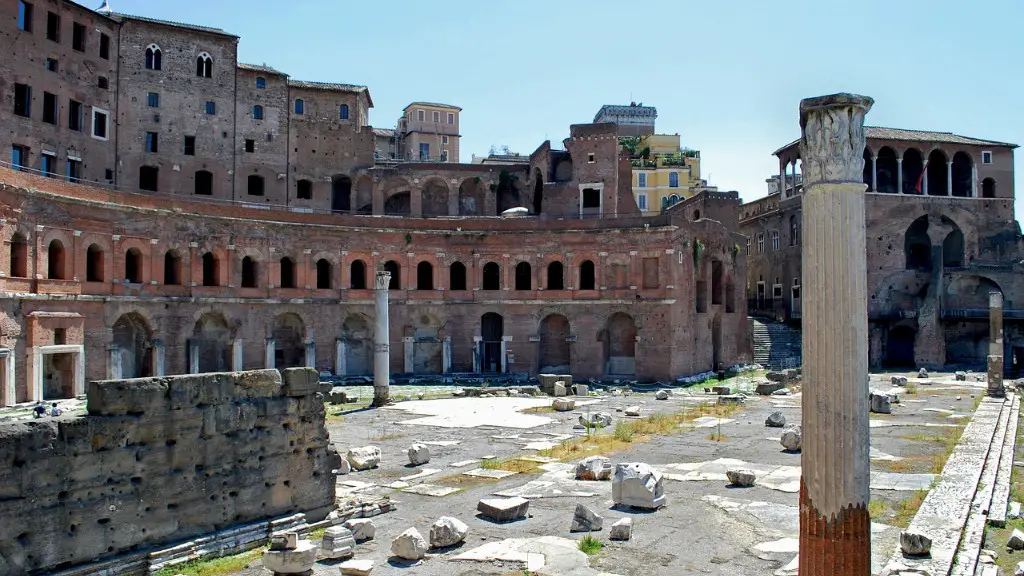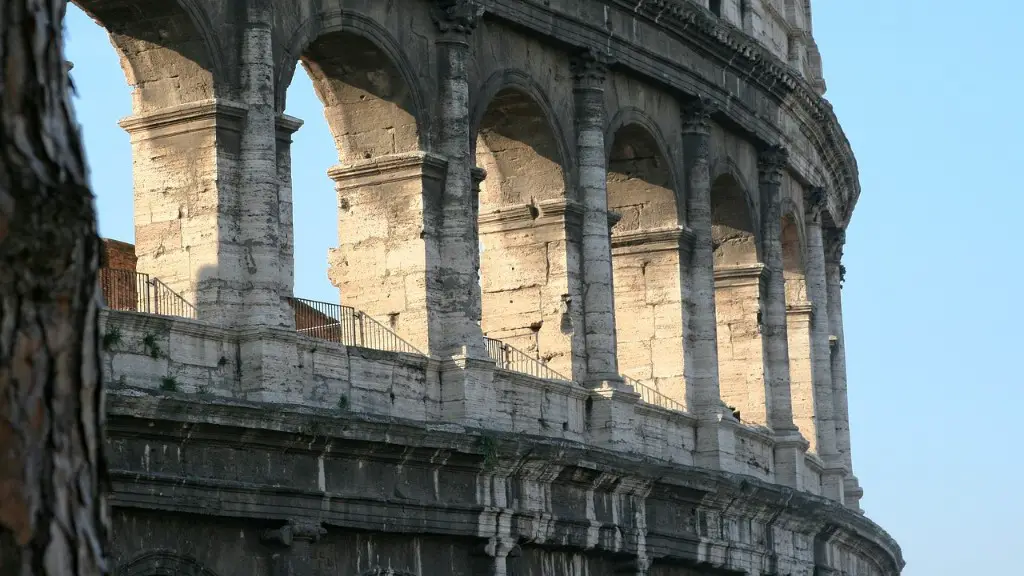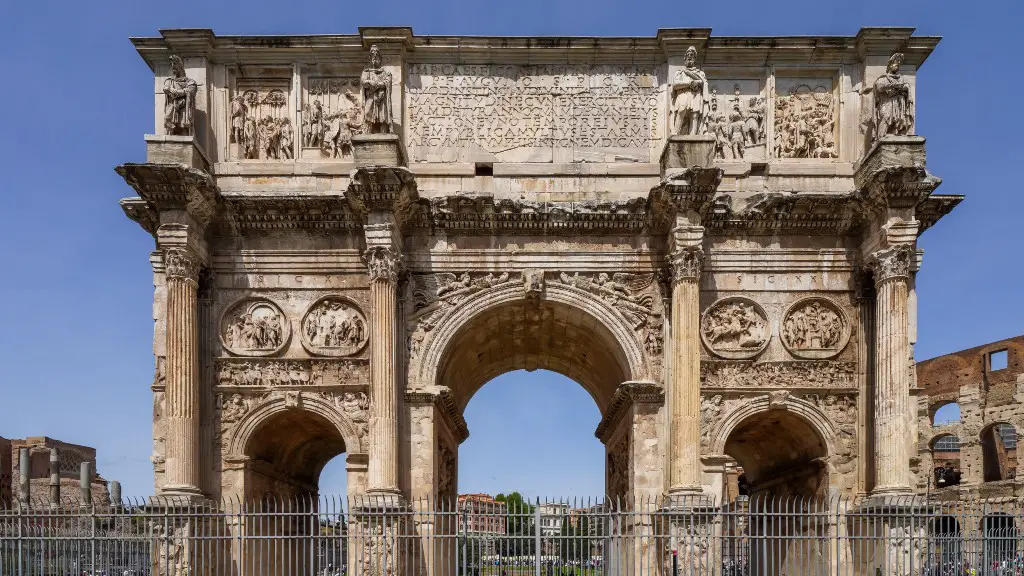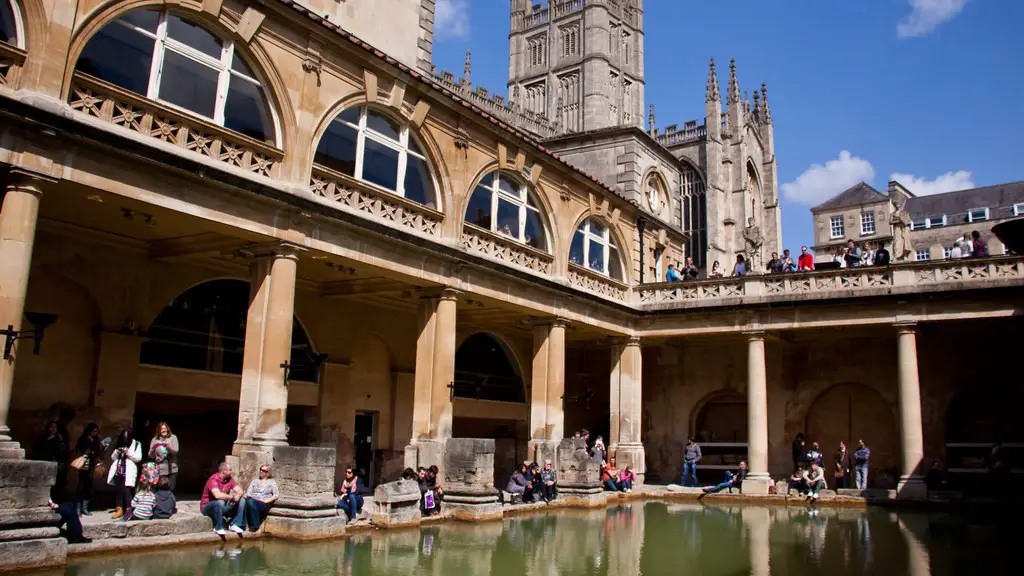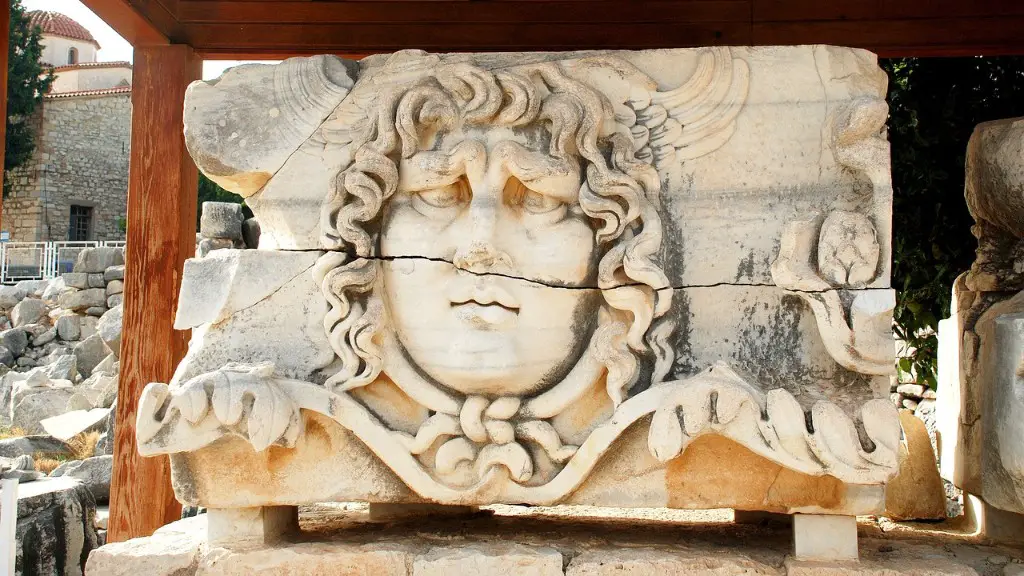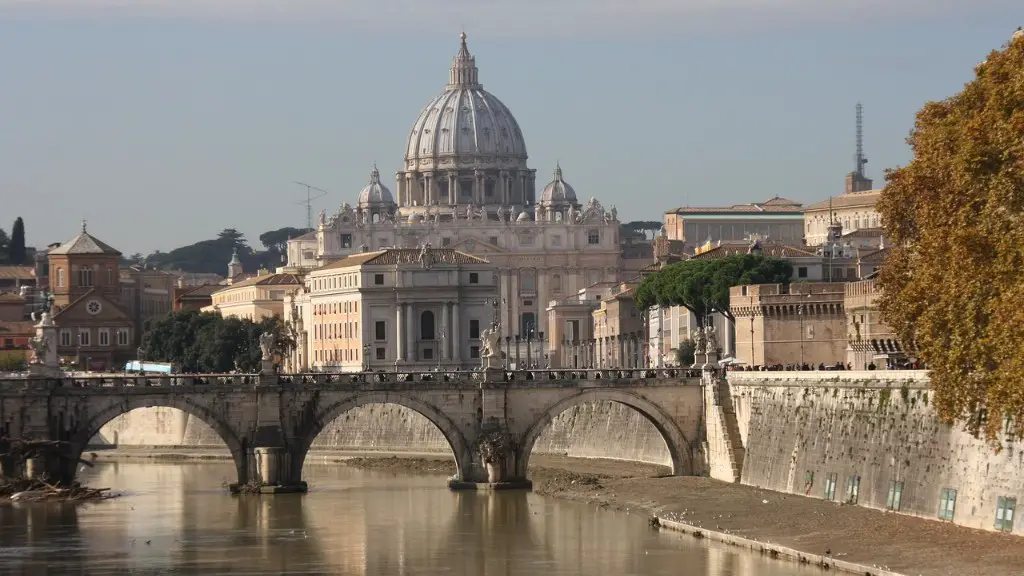Travelling to Ancient Rome evokes many images, from the iconic Colosseum to the cobbled streets of the old city. Yet, there is one element of the classical past that often gets overlooked – the iconic aqueducts.
Aqueducts were a critical aspect of everyday life in Ancient Rome. As well as providing drinking water for its citizens, they played an important role in the city’s sanitation, irrigation, and industry. But why were they so integral to Roman life?
The answer lies in the geography of Rome. The city is located in the centre of a basin and is surrounded by hills – a perfect location for the construction of aqueducts. In order to build an aqueduct, one must first find a source of water and plan the route of the aqueduct. The streets of ancient Rome were constructed in a strict grid pattern, which made it easier to locate the sources and plan the course of the aqueducts.
Ancient Roman engineers combined their engineering know-how with the natural elements of the landscape in order to develop a sophisticated system of aqueducts. The aqueducts were a complex network of conduits, canals, tunnels, and bridges, which were designed to carry water from distant sources to the centres of the Roman Empire.
The first aqueducts in Rome were built during the rule of Augustus in the late 1st century BC. By the time of Emperor Trajan in the early 2nd century AD, the aqueduct network had grown to over 11 km in length. This sophisticated infrastructure became the backbone of the city’s infrastructure.
The aqueducts were crucial for providing water to the ever-growing population in the city. It was estimated that by the 2nd century AD, the population of the city had grown to over one million inhabitants. The amount of drinking water needed for such a large city was staggering and it would have been impossible without the aqueducts.
The aqueducts also played an important role in the daily lives of the people of Ancient Rome. The water was used for everything from bathing to irrigation, and many of the public baths were built alongside the aqueducts – the ancient equivalents of jacuzzi spas. In addition, the Romans used the water for cooking and washing their clothes, as well as keeping their homes clean and hygienic.
In addition to their practical use, the aqueducts of Ancient Rome were also a symbol of the city’s grandeur. The aqueducts were a testament to the sophistication, creativity, and engineering prowess of the Romans. The fact that these structures have survived for millennia shows the grandeur of the Roman Empire.
Ancient Roman Water Supply System
The Ancient Romans developed a comprehensive and efficient water supply system. This system was comprised of the aqueducts, underground reservoirs known as ‘castella’, and a system of pipes and fountains. The castella were large underground cisterns that were used to store and distribute water throughout the city. The fountains were a critical component of the infrastructure, as they were the main source of water for the citizens. The fountains were often decorated with elaborate sculptures and inscriptions, illustrating the importance of the water supply system to the people of Ancient Rome.
The Ancient Romans had a unique approach when it came to water storage, as they never relied solely on one source of water. Instead, they created a complex network of aqueducts and fountains, which allowed them to draw water from multiple sources and distribute it throughout the city.
The development of a comprehensive water supply system allowed the citizens of Rome to enjoy a luxurious lifestyle. This lifestyle was largely enabled by the aqueducts, which enabled the people to bathe, wash their clothes, irrigate their crops, drink, and cook.
The infrastructure was so advanced that it even included a system of sewers, which were used to discharge waste water and other liquid materials away from the city. This sophisticated sanitation system helped to maintain a healthy living environment, a key factor in the longevity of the Roman Empire.
Architecture of Ancient Aqueducts
Ancient Roman aqueducts were feats of engineering, as they were built entirely by hand. The aqueducts were constructed from an array of materials such as stone, marble, wood, and clay. These materials were combined to create a complex network of tunnels, canals, bridges, and conduits.
The aqueducts were often very large and impressive structures. Some of the larger aqueducts, such as the Aqua Claudia and the Aqua Virgo, had a width of up to 5 meters. The aqueducts were built in a variety of shapes and sizes to accommodate their specific purpose, such as supplying water to public baths or providing drinking water to citizens in certain parts of the city.
The aqueducts were also designed to withstand the test of time. They were constructed using a variety of materials, such as brick and concrete, which helped to reinforce the structure. The aqueducts were also equipped with drainage systems, which prevented water from leaking or overflowing.
The aqueducts also featured an intricate system of arches and wells, which provided support for the tunnels and canals. These arches could be used to increase the amount of water that was carried or decrease the amount that was discharged. This was crucial for controlling the water pressure and preventing the collapse of the aqueducts in case of flooding.
Roman Law and Aqueducts
The Roman state put great emphasis on maintaining the aqueducts, which were protected by law. The aqueducts were subject to strict regulations and laws, which protected them from any form of interference. The state imposed severe penalties on those who violated the laws, such as imprisonment and fines. This ensured that the aqueducts were kept in good condition, as any damage could have catastrophic consequences for the city.
The aqueducts were also a source of great pride for the Roman people. The impressive structures were a key symbol of the power and grandeur of the Roman Empire. Even today, the aqueducts of Ancient Rome still inspire awe and admiration.
Conclusion of Aqueducts’ Importance
In conclusion, the aqueducts of Ancient Rome were an integral aspect of the city’s infrastructure, providing a crucial source of drinking water for its citizens. The aqueducts were an impressive feat of engineering and a source of great pride for the Roman people. Even today, the aqueducts still inspire awe and admiration, testifying to the grandeur of the Roman Empire.
Surviving Examples of Aqueducts
Many of the aqueducts of Ancient Rome have survived to the present day. The most famous of these is the Pont du Gard in France, which is a UNESCO World Heritage Site. The Pont du Gard was built in 19 BC and is still in an impressive state of preservation. Another famous aqueduct is the Aqua Traiana, which is located in the Lazio region of Italy. It was built in 109 AD and is a striking example of the technological prowess of the Ancient Romans.
Modern Aqueducts and Their Influence
The aqueducts of Ancient Rome continue to influence modern engineering practices. During the 18th and 19th centuries, many cities around the world constructed their own elaborate aquatic infrastructure following the example of the Ancient Romans. The most impressive of these is the Central Arizona Project, a 336-mile long system of aqueducts, canals, and pipelines that carries Colorado River water to Arizona.
The legacy of the Ancient Roman aqueducts can still be seen in many cities around the world. These structures continue to inspire awe and admiration, testifying to the technological know-how, vision, and ambition of the original architects.
Aqueduct Technology and Education
In recent years, there has been an increased focus on aqueduct technology and education across the world. Various organizations such as the International Water Association are working to promote the importance of water management and education, as well as advancing aqueduct technologies. These programs have been very successful and have been beneficial to the global community in terms of water resources preservation, efficiency, and sustainability.
In addition to this, a number of universities have also started offering courses on aqueduct technology and management. These courses aim to equip students with the knowledge and skills necessary for developing and managing aqueducts for both urban and rural areas.
The importance of aqueducts and their influence on the daily lives of people around the world cannot be underestimated. They are a testament to the technological sophistication of the Ancient Romans and a reminder of the importance of water conservation and management.
